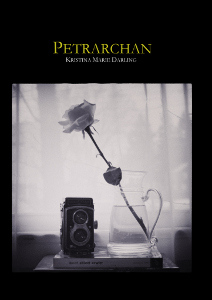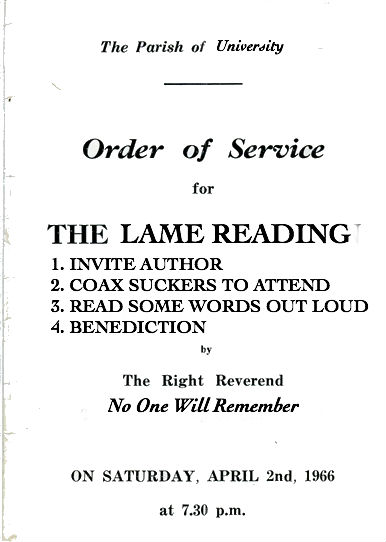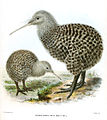Traveling on Foot: Werner Herzog
Guest post by Carol Keeley
I first saw Werner Herzog Eats His Shoe at the Music Box, a Chicago theater with faux stars overhead and a live organist between features. While Herzog stuffs garlic and herb bundles into the toe of each boot, he invokes a “real war against commercials, against talks shows” and television, then pauses to add hot sauce to the boot before lacing it. He brushes dirt from the sole with his sleeve, then drops it in a stock pot. Alice Waters later adds a bucket of duck fat and some rosemary. The result of a bet with Errol Morris, who was struggling to make Gates Of Heaven, Herzog hoped this act would encourage scared filmmakers. After the boots simmer for five hours, Herzog sits to carve one in front of an audience, deciding to skip the gummy rubber sole. When you eat a chicken, he reasons, you leave the bones.
Being Bavarian explains his “affinity for the fertility of the jungle,” how it represents “an intensified form of reality,” he says in Herzog on Herzog. He often stresses that he’s Bavarian, not German. They’re as different as Scots and Brits, he insists. Take Ludwig II, “vivacious, crude and roughly hewn,” also known as the Swan King. And the Mad King. He built Disneyesque castles “full of Bavarian dreaminess and exuberance,” says Herzog, whereas William II, “that idiot, spent all his money on wars.” He goes on to describe King Ludwig wandering the countryside, sleeping in huts, knocking on doors, then stripping off royal jewelry to give to the child who brings him water.
“The world reveals itself to those who travel on foot.” This is Herzog’s dictum. For him, this means “traveling without a house on my back.” Just a toothbrush, compass, a change of underwear. If you travel without luggage, you must ask for shelter, forage for food. This is precisely what he did when told Lotte Eisner was dying. “She was the missing link, our collective conscience, a fugitive from Nazism” and an expert film historian. “German cinema could not do without her.” He knew if he traveled on foot to see her, “she will not die. I’m not superstitious at all,” he tells us. “I just knew this.” So he walked from Munich to Paris.
Of Walking in Ice, Herzog’s journal of this pilgrimage, is a jewel of loneliness, ecstasy and engagement. He leaves Munich on November 23, 1974 with “a jacket, a compass, and a duffel bag,” plus new boots. Along the way, he sleeps in barns or breaks into empty homes. He’s an excellent lock-picker, a skill he teaches at his Rogue Film School, along with forging permits, guerrilla tactics and self-reliance.
This slender book feels handmade and is filled with rain. “Snow, snow, rainy snow, snowy rain.” The loneliness of his journey becomes ecstatic, releasing sprays of mood and weather and close observations that blend with hallucinations. He breaks into a weekend cottage and finishes the crossword puzzle someone has labored over; he sees a nun with an eagle tattooed on her exposed chest; and watches a man cross a bridge “so slowly and ponderously,” with such hesitation, it’s clear “that is Death walking with him.” The grandmother who takes him in for a night makes “pink brasseries at home, a whole heap of them is piled up in the kitchen. I wanted to sit and watch, but I’m too tired.”
Finally, sunshine appears, but brings no relief as his shadow stalks him. It “cowered there creepingly, down around my legs, causing me in truth such anxiety.” He makes bad decisions regarding the route and corrects them with more wrong choices. He notes that “the clouds and the fog, they snub you.” While breaking into a house, he loses the compass clipped to his belt. “I’ve been attached to it ever since the Sahara and it’s a painful loss.” Later he replaces it with a hydraulic compass, but remarks sadly: “it doesn’t have my friendship yet.” Boys sneak reads of comic books by crouching out of view of a shopkeeper’s mirror. Herzog sits on church steps for a moment, feeling a wave of despair and exhaustion, then hears a young teacher shrieking at children. The duffel bag wears a hole in his sweater’s left shoulder. The observations are detailed; they’re fever poetry:
I’ve barely eaten anything all day, just tangerines, some chocolate, water from streams drunk in animal posture. […]At an airport, a mayor has been beheaded by a helicopter as he was stepping off. A truck driver with lurking eyes, wearing worn-out slippers, pulls out an extremely misshapen Gauloise and smokes it now without straightening it out.
He declares this all “senseless beyond description” and “utter absurdity. Is our Eisner still alive?” Then a sudden rainbow fills him “with the greatest confidence. What a sign it is, over and in front of him who walks. Everyone should Walk.” The range of mood is symphonic. There are stretches of adolescent moping–
The loneliness is deeper than usual today. I’m developing a dialogical rapport with myself. Rain can leave a person blind. Please, not this again! Can the sun be losing every consecutive battle?
Then explosions of joy as dozens of cranes battle wind gusts to fly in perfect formation. “It was magnificent how they regrouped. Like the rainbow, the cranes are a metaphor for him who walks.”
For half a day, he fixates on the word millet; this word he’s “always liked so much, just won’t leave my mind, the word ‘lusty’ as well. Finding a connection between the two words becomes torture.” He rambles for miles, then: “My output of sweat is prodigious, as I march lustily thinking of millet.” It is a portrait in the mind’s playfulness, its native inability to be bored. This is how traveling on foot becomes for him a singular intensity, a way of “moving through your own inner landscape.” For pages, he describes his grandfather’s decision not to leave an armchair because he was convinced his spine had disassembled and he’d crumble into a bone pile if he stood. His wife visited him regularly for 42 years after he finally moved from the chair to his sister’s bed. It’s described so vividly, it’s impossible to discern between mind-flight and family history. He blurs the lines beautifully. Here are the “wild fantasies and an agitation of mind” that he believes are more important than any curriculum.
Ecstatic truth is his medium. In an era of virtual reality, VH1, and bogus memoirs, we need a new definition for reality. Herzog’s may be closer to Greek myth, the Ramayana, Latin American literature, or even the Red Book. In the Minnesota Declaration, Herzog claims “there is such a thing as poetic, ecstatic truth. It is mysterious and elusive, and can be reached only through fabrication and imagination and stylization.” Intensified reality. Ecstatic truth. An agitation of mind. It’s the place where language dissolves, image exalts and the human experience touches the ends of aloneness, blends with the texture of dreams. These are places best reached by walking on foot. This is where Herzog resides.
By the time he reached Paris on December 14th, Eisner had left the hospital. She lived for another nine years after Herzog’s visit.
This is Carol’s third post for Get Behind the Plough.


